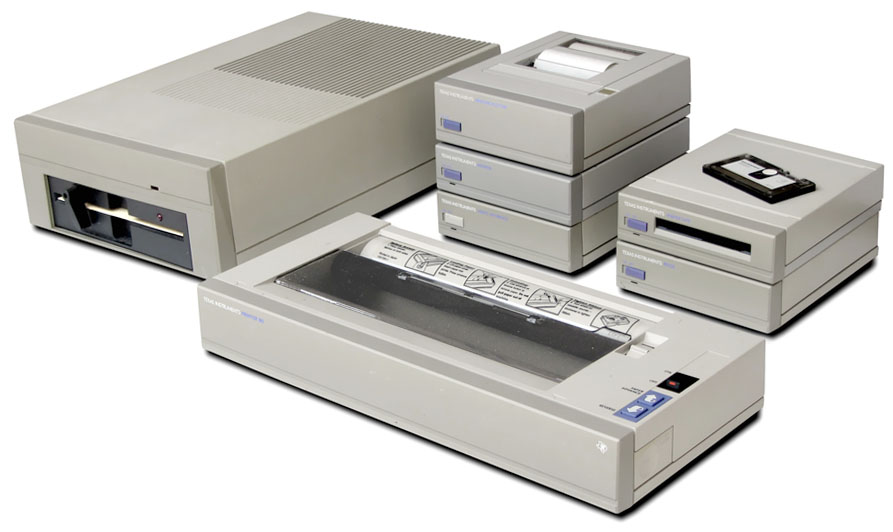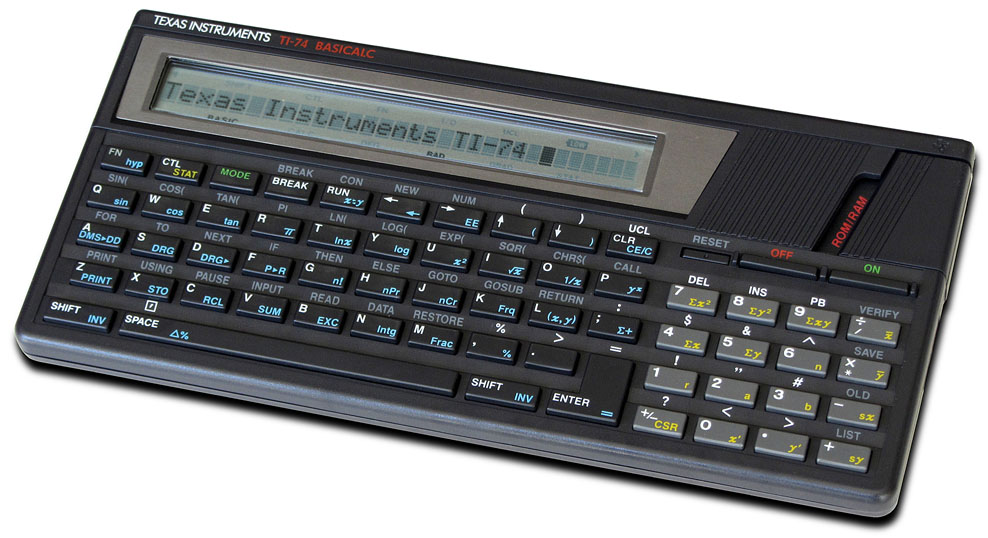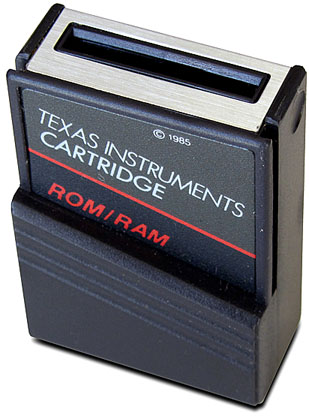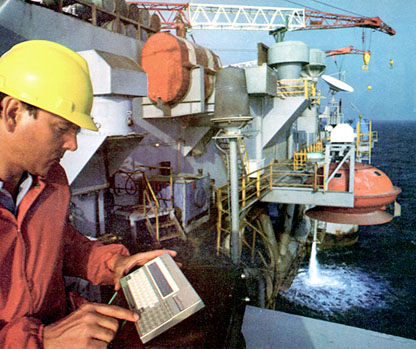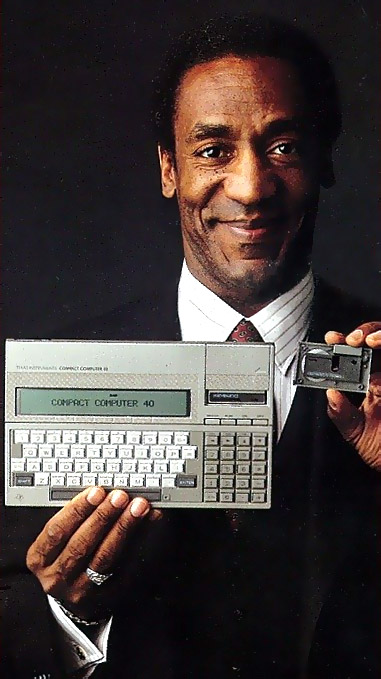| Part Number | Name | Price | Released? | Description | Device # |
| HX-1000 | Printer/Plotter | $200 | yes |
Based on ALPS printer. A four-color, x-y plotter, using 2.5 inch (60mm) wide paper. Can print simple graphics, and 18 or 36 text characters per line. | 10,11 |
| HX-1010 | Printer 80 | $250 | yes |
An 80-column thermal dot matrix printer - prints on full-size 8.5-inch wide paper. Can print on thermal paper, or plain paper using an ink ribbon. | 16,17 |
| HX-1100 | Video Interface | $100 | no |
Displays 40x24 monochrome text on your TV (RF ch.3 or ch.4) or monitor (composite video) | 40 |
| HX-2000 | Wafertape Digital Tape Drive | $140 | no |
Similar to the Exatron Stringy Floppy. Up to 48K bytes storage, with a data transfer rate of 8K bits per second. Holds 16 files per tape maximum. | 1-8 |
| HX-3000 | RS232 Interface | $100 | yes |
Communicates with an external serial device such as a printer, modem, terminal, other computers, etc, at up to 19,200 baud | 20-23 |
| HX-3000P | RS232 Interface w/ Parallel Option | $120 | yes |
Same as above, but also interfaces with parallel printers. Might also be part number HX-3200 | 50-53 |
| HX-3100 | Modem | $100 | yes |
300 baud direct-connect Bell 103-compatible modem to communicate with another computer via telephone line. | 70 |
| HX-5102 | Disk Drive/Controller | unkwn | no |
DSDD (360K) 5.25 inch floppy drive, formats to sixteen 256K sectors per track. Supports four floppy drives. | 101-104 |
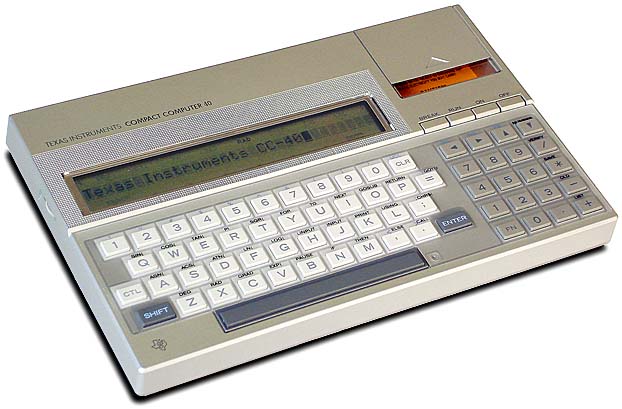

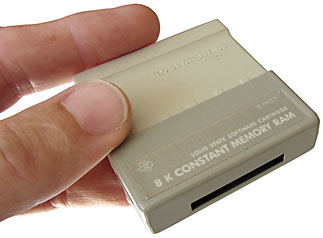
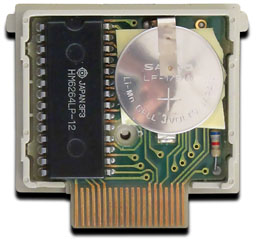
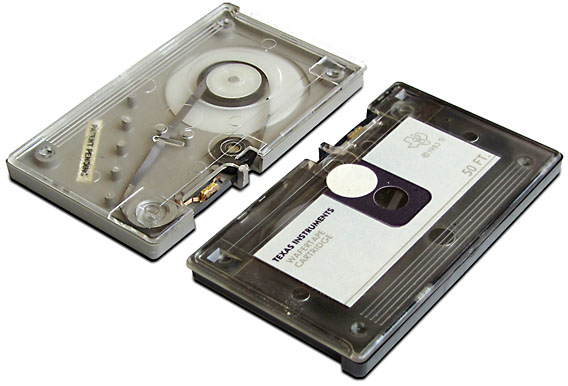 Lacking any standard communications ports, the CC-40 doesn't really interface to anything directly, so there's no way to permanently save your own
programs or data on any external or removeable storage device like a floppy disk. This severely limited the usefulness of the CC-40 system.
While the CC-40 has a built-in proprietary Hex-Bus serial networking port (like USB, but not hot-swappable), no Hex-Bus storage devices were ever released by TI.
Lacking any standard communications ports, the CC-40 doesn't really interface to anything directly, so there's no way to permanently save your own
programs or data on any external or removeable storage device like a floppy disk. This severely limited the usefulness of the CC-40 system.
While the CC-40 has a built-in proprietary Hex-Bus serial networking port (like USB, but not hot-swappable), no Hex-Bus storage devices were ever released by TI.
